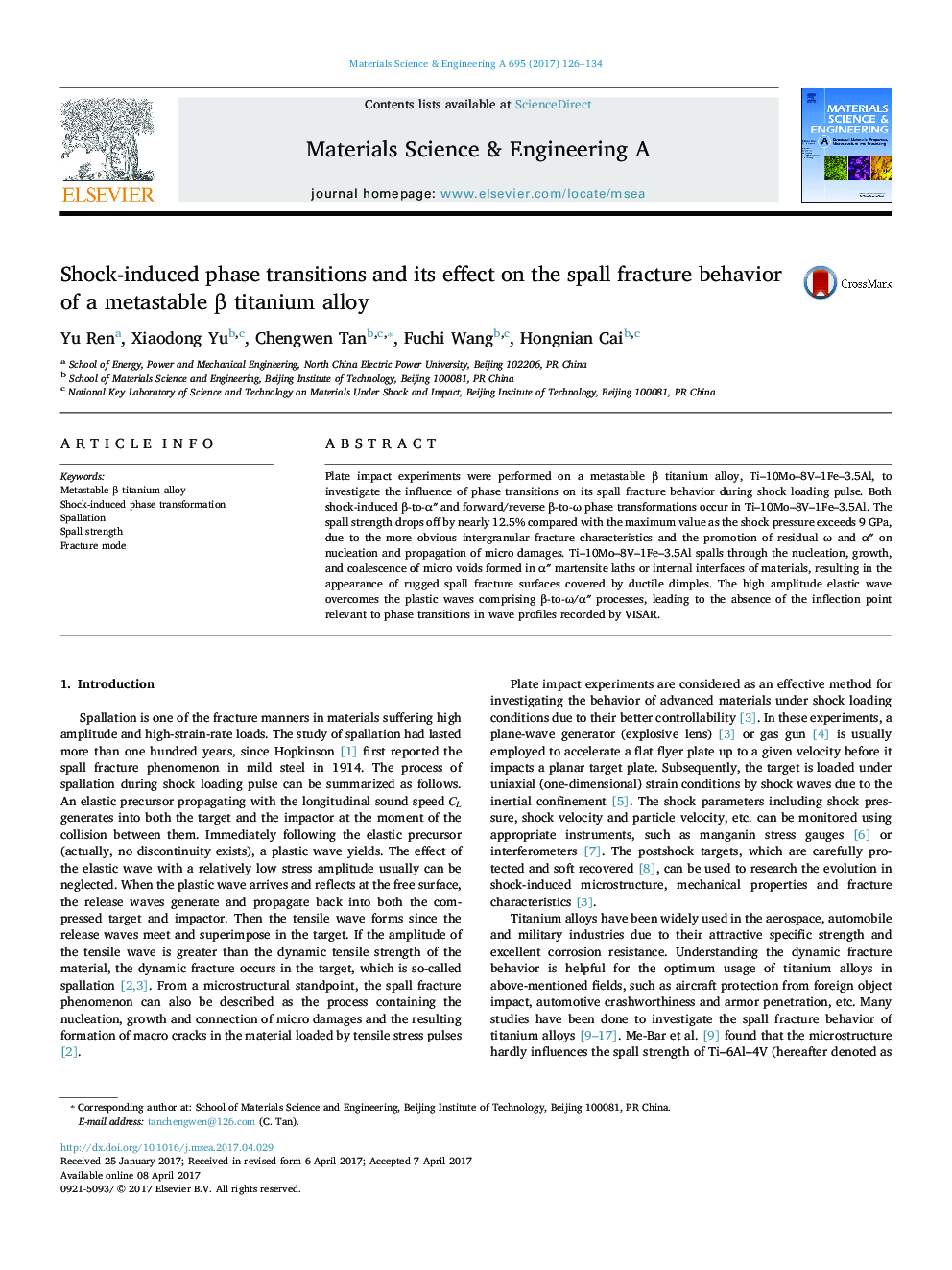| Article ID | Journal | Published Year | Pages | File Type |
|---|---|---|---|---|
| 5455708 | Materials Science and Engineering: A | 2017 | 9 Pages |
Abstract
Plate impact experiments were performed on a metastable β titanium alloy, Ti-10Mo-8V-1Fe-3.5Al, to investigate the influence of phase transitions on its spall fracture behavior during shock loading pulse. Both shock-induced β-to-αⳠand forward/reverse β-to-Ï phase transformations occur in Ti-10Mo-8V-1Fe-3.5Al. The spall strength drops off by nearly 12.5% compared with the maximum value as the shock pressure exceeds 9 GPa, due to the more obvious intergranular fracture characteristics and the promotion of residual Ï and αⳠon nucleation and propagation of micro damages. Ti-10Mo-8V-1Fe-3.5Al spalls through the nucleation, growth, and coalescence of micro voids formed in αⳠmartensite laths or internal interfaces of materials, resulting in the appearance of rugged spall fracture surfaces covered by ductile dimples. The high amplitude elastic wave overcomes the plastic waves comprising β-to-Ï/αⳠprocesses, leading to the absence of the inflection point relevant to phase transitions in wave profiles recorded by VISAR.
Related Topics
Physical Sciences and Engineering
Materials Science
Materials Science (General)
Authors
Yu Ren, Xiaodong Yu, Chengwen Tan, Fuchi Wang, Hongnian Cai,
